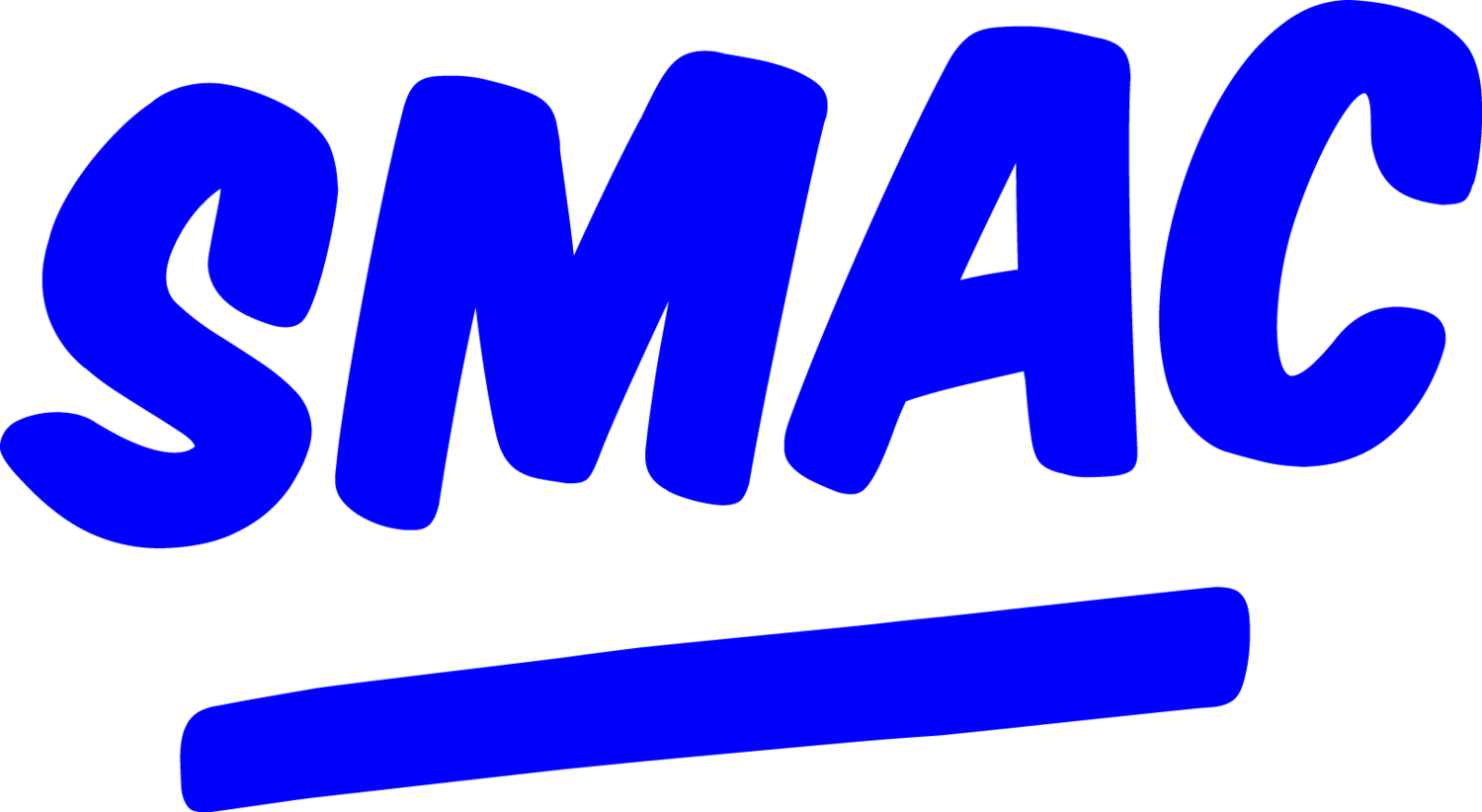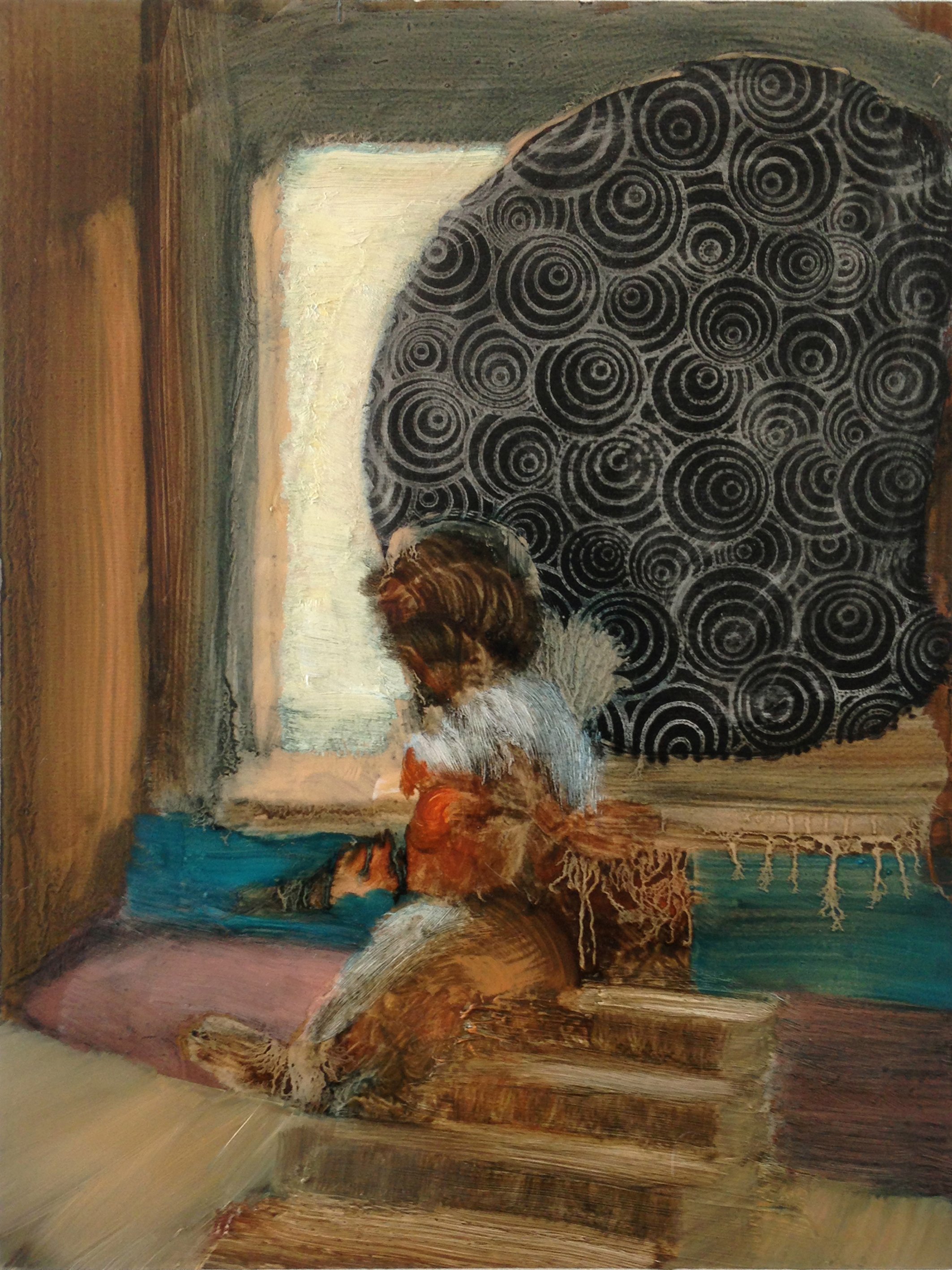Interview with Michael Samuels + GL Brierley
The Universe and the Particular // 14th September – 1st October 2023
It's so concrete and yet so abstract.
There is wood, metal, LED, material. Line, cut, assemblage. Also: Abstract figuration, abject thrown motifs, impasto oil, organic strokes, surreal perspectives.
SMAC: Both of your studios are located in the same building in London. I assume, you know each other and the works of the other pretty well. Is this your first collaboration?
Michael Samuels: Yes, we met many years ago in a studio residence. After doing my Masters at the Royal College of Art, I moved into my current studio. Back then it was easy to find studios in Hackney, now it's extremely difficult. We chat most days and share a certain sense of cynicism and humour. Our whole studio building is very social. I have never subscribed to an artist being stuck alone in their studios, I love engagement and visitors. We have done exhibitions together before but not in a 2 person situation.
GL Brierley: We did a residency together many years ago and we have stayed in touch and seen the developments in each other’s work. But yes, this is
our first real collaboration.
The media, technics, the aesthetic language and even the topics you’re choosing differ quite strongly. Was it easy to imagine your works in dialogue with each other in an exhibition?
GLB: Our work differs quite a bit but I think there are some crossovers. Both our practices speak a lot about materiality (of paint in my case) also about juxtaposing disparate themes which flirt with the absurd. We seem to have the same method of working where we allow each piece to evolve as we experiment, staying open to new outcomes.
MS: We decided, in the beginning, to keep our work separate in the exhibition, with the exception of one work which we would have in the other’s space.
There was no intention of a dialogue, more a show about aesthetics and our opposing practices. What joins them together is our painterly approach using different mediums
The exhibition title is „The Universe And The Particular“. It seems to suit both of your bodies of work, even though they are obviously very different. Who came up with the title?
And what does it mean to you?
GLB: Michael came up with the title and I think he was shocked when I said “YES”! For me the title works so well because it seems to speak about all the areas covered in our very different practices.
MS:I had heard the phrase a few times and it stuck in my head. I am always looking for titles, we had a shortlist and decided on this one. To me it reflects the totality of existence, how most things are out of our control, and the futility of what we both do, spending a lifetime looking for perfection simultaneously knowing this is unachievable.
Oh, that’s so nice and interesting to hear. For me,
I understood it as the perfect description of your practices. Since they both depict something very particular and unfamiliar though they are made from universally known ingredients. What do you admire most about the work of the other?
MS: We come from completely different approaches but respect each other's practices. I appreciate Louise’s painstaking approach and passion for paint, her process and the beautifully intense surfaces she creates over time. There's a definite tie in our practices, we both like to start not knowing what the finished result will be, and there will always be room for accidents. She's always experimenting.
GLB: I like the fact that he is continually moving, trying new ideas, there’s always a new object he has sourced to reappropriate. There is a freshness and bold simplicity and good use of colour in Michael’s work and I’m happy if that rubs off on me.
Michael, you are also the curator of the exhibition. Does curating your own work make the exhibition development process more difficult or easier?
MS: Not so much the curator, I think of it as just working with a friend that I admire, so the process becomes easy. We have known each other since I first started making art and originally met at my first studio. Our work and process are very different but we have a similar approach to our process, making impromptu visual decisions.
Louise, the first time I stumbled across your work was at the infamous 2018 NGORONGORO 2 exhibition in Berlin-Pankow. But not only this one, you had several exhibitions in Germany and Berlin, but you studied and work in London. How come? And what is your relationship with Berlin?
GLB: My connection with Berlin really first came through the curator, Wolfgang Schoppmann. He has been very supportive and was instrumental in introducing my work to some good German collections including the Collectors Room/Olbricht Foundation. I had also, at the same time, met Stefanie and Andreas at the FWR gallery in Berlin who have also been supportive and have given me several
solo shows.
When I look at your paintings, they evoke strong emotions in me. They strike me as hazy memories of dreams I once had but can’t quite recall anymore. Your brushstrokes seem to walk the line between the figurative and the abstract in a quite unique way. How much does the unconsciousness – either your own or the concept – influence your practice?
GLB: All the work is invented and comes from a feeling, a kind of inner-dialogue. I did so much drawing when I was younger that I now have an internal “library” to work from. I am lucky to be able to draw on a visual memory and this gives me a freedom that I wouldn’t have if I were working from a photograph. The painting also dictates how it should go in a two-way process. My only real rule is to stay engaged, this means being open to accidents, trying new ways to surprise myself. The “figures” often come unbidden but feel as if they are there to say something.
Your motives seem to be still, even abject, yet moving and very alive at the same time. Do you consider your paintings still lifes or portraits?
GLB: I need to keep a seductive surface quality which means there has to be life in the marks I make. The idea of light is very important. I don’t want the image to be so easily categorised so if it hovers between portrait and still life then I encourage that tension. And yes, the abject is never far away, I enjoy the dichotomy of beauty and repulsion.
As much as the – let's call them ... figures in your works are hard to grasp, so are the surrounding spaces and perspectives. Where do they appear from? What’s your inspiration for the sceneries, colors and structures?
GLB: The “scenes” are inspired by many things; theatre sets, modernist architecture, 1970s interiors, Hackney Marshes … they come on their own from the first marks I make, and are always invented. Sometimes I sit and work on the floor, there’s a child-like freedom that way, the paint can be wetter and slightly out of control which is exciting (like riding a runaway horse) The wetness of the paint allows alchemical reactions to happen.
How about other artists? Who else influenced and inspired you? Do you have idols? Is there any tradition in which you’d see yourself?
GLB: I expect that our influences couldn’t be more different apart from both of us being drawn to modernist and brutalist architecture. My work comes from an Old Master tradition where I use oil on panel and chiaroscuro painting. Heroes of mine are very much from the past, Goya, Hammershoi, the photographs of Kusakabe Kimbei, set designs of Caspar Neher …
MS: I don't really get inspired, occasionally someone's work moves me and then I know it's good. I see a lot of art, a lot of work is derivative. I like originality and truth in materials. Sometimes the less you know the better if you're trying to be different. Having said that, I do love Robert Rauschenberg, Doris Salcedo, Carol Bove.
Are there antagonists as well?
MS: My list of antagonists is longer than my idols.
Speaking about Rauschenberg, your works seem rather neat and clean to me. How big of a perfectionist are you?
MS: Yes, I am a bit of a perfectionist, a control freak. I get so much satisfaction out of making things and using my hands. The thing is, it is never perfect, if I ever thought it was, I would stop creating. It is in the nature of what we do, you strive for perfection, but you never achieve it. If you think you have reached perfection, you are doing something wrong.
Do you develop a concept first and start to look for the right fragments, or do your materials guide the process?
MS: The materials definitely guide the process. As a rule, which I have learnt from experience, I never plan, draw or think ahead. I see no reason in knowing what the final result will be before I have even started. It's a performative practice of working with materials that are sitting in the studio which happens with immediacy. For the second Ngorongoro, I was invited to do something huge, an opportunity which I relish. My studio is not big so if I do something large I can't complete it or see it finished in the studio. I managed to acquire 35+ old ladders which were all flat-packed into the back of a van. Once we arrived in Berlin I lashed all of them together with clamps and cable ties to create a 10-meter structure. This was all done in a day, very performative, fun and satisfying. It was my idea of a massive drawing using ready-made objects with history, to fill a huge space.
So where do you find such materials?
MS: My materials are carefully sourced. I buy things on eBay with no particular intention of what I want to do with them. They sit in the studio until I use them. Sometimes I don't use them. Some of my most successful work happens in hours. I steer clear of traditional art material, for me it comes with too much baggage, I want to have a unique visual language. I like to use things from outside the studio, domestic items, ready-mades, mid-century furniture letterpress drawers etc, converting functional objects into non-functional objects. I often change mediums to keep myself interested. Changing has its disadvantages in the commercial gallery world as they often like the same things over and over. I always want to be inconsistent, not on repeat.
Your sculptures appear like collaged readymades, you cut, chop and reassemble to form something new. What happens to the sections that are cut off and remain?
MS: I am terrible at throwing things away in the studio. I keep too much but now and then I have a clean-out. I quite often find work within something that I have already destroyed or reconfigured.
The pieces seem like real characters with a strong will to me. Do you have conversations with them? And if yes, what are they telling you?
MS: Nope, it's a love-hate relationship, I often don't like what I made 2 weeks after it's finished, but this gives me momentum to keep making and experimenting. Once a work is finished I never return to it.
How much do you feel your works are political, social or aesthetic commentaries?
MS: I think that's for other people to decide, I mainly have an old school, aesthetic approach, it’s all very immediate. The moment I have to read to understand someone's artwork they have lost me. I have a purely visual and tactile attitude to my work.
Interview: Hilka Dirks
Photos: Michael Samuels, GL Brierley
Translation into German: Hilka Dirks







